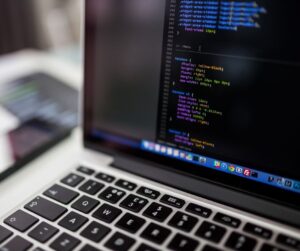
The history of the development of the python programming language and its advantages
A little history of the creation of Python
Python programming for children is one of the areas of study at our school. Let’s talk about the history of the creation of this language.
- The Python programming language was created in 1991 by Guido van Rossum, who was working at the time in the Netherlands at the Centrum Wiskunde & Informatica (Center for Mathematics and Informatics). He created the language for his own needs, but quickly realized its potential and began to distribute it to other programmers.
- In 1994, the first version of Python was released, which received considerable success among programmers and quickly became popular. Currently, Python is considered one of the most popular programming languages in the world.
- In 2000, Python 2.0 was released, which added support for classes, exceptions, and new data types, such as the boolean boolean type and the unicode type for handling Unicode characters. In 2008, Python 3.0 was released, which had significant changes compared to previous versions, in particular, it was distinguished by the rejection of support for some old features that were not simplified and were quite difficult to use.
- Since 2008, Python development has been focused on version 3.x, and Python 3.9 was released in 2020. The newer version added new features and improved existing ones, allowing for improved performance, security, and expanded language capabilities.

Python has become one of the most popular programming languages in the world, thanks to its simplicity, convenience, flexibility and capabilities. Python is used in many fields such as data science, web application development, artificial intelligence, scientific research.
We suggest visiting our Python courses for children. During the lessons, students perform interesting tasks and develop their individual projects.
Python has several advantages that make it one of the most popular programming languages:
- Easy to learn: Python has an easy syntax and logical structure that allows new users to quickly learn the programming language.
- Flexibility and extensibility: Python can be used to build many different types of applications, from web applications to games and machine learning.
- Rich standard library: Python has a large number of standard modules that can be used to solve various problems without the need to write your own functions.
- Large number of third-party libraries: Python has a large developer community that is constantly expanding the functionality of the language with the help of third-party libraries.
- Portability: Python can run on a variety of operating systems, including Windows, macOS, and Linux.
- Open source: Python is an open source programming language, which means that users can edit and extend the language to suit their own needs.
- Machine learning capabilities: Python has a large number of machine learning libraries such as TensorFlow, Keras, and PyTorch, making it popular for developing artificial intelligence models.

These advantages make Python popular in many fields, from web development to data science and machine learning.
 IT-школа
IT-школа